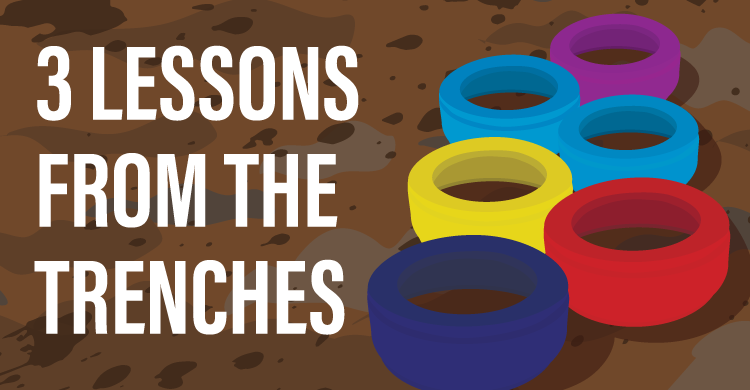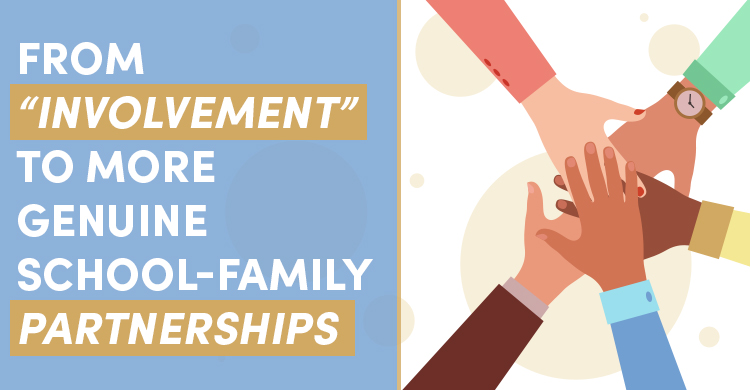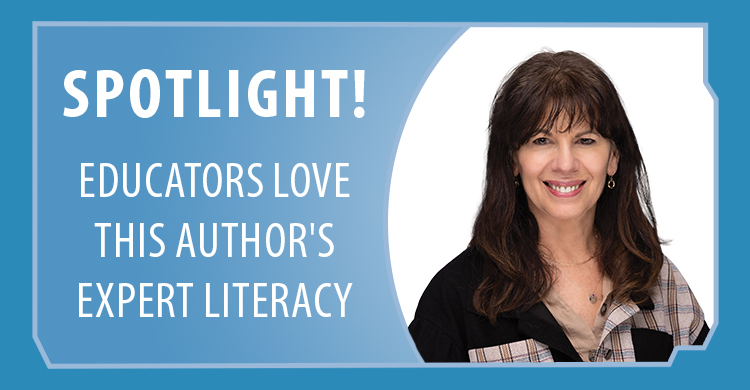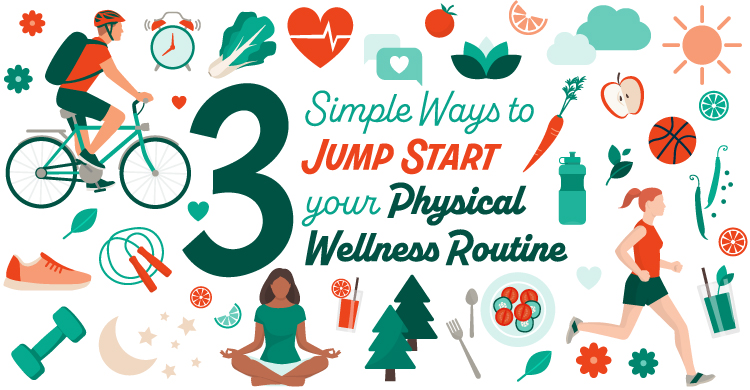As I reflect on our team’s journey over the last two years, I’m reminded of the Tough Mudder I completed with some close friends. If you don’t know what a Tough Mudder is, it’s 12 miles of obstacles designed by British Special Forces to test physical and mental strength and reward teamwork and interdependence. Tough Mudders are messy courses full of ramps, ropes, hoops, ditches, and more, but with the purpose of challenging you to step, crawl, run, or jump outside your comfort zone. There is no way these courses can be done alone, and there are no programs that can prepare you for one. In a Tough Mudder, you and your group must be constantly learning by doing, embracing the mess, and becoming a better and more efficient team. In the beginning of my Tough Mudder, I had a number of individual goals (e.g., finishing without getting hurt), but at some point during the event, I started thinking and caring more about the success of my team.
In many ways, Tough Mudders remind me a lot of building a professional learning community (PLC).
In 2021, I joined the Central Bucks biology collaboration team at CB East High School after 18 years of teaching eighth grade. This was just after the pandemic, and bringing the school back together as a community was the top priority. We had many messy obstacles to face, but we were going to overcome them together and come out stronger.
Lesson 1: From teacher isolation to teacher teams
At the start of my Tough Mudder, my team and I had to climb an eight-foot wall with no rope to get into the corral; I needed help just to get to the start—to get over that initial wall—and as soon as I did, I turned around and offered a hand to my good friend behind me. Once in the corral, we took a knee and pledged to help our fellow Mudders beat their personal record (PR) time.
On my first day at my new job, it was evident that many teachers at CB East High School worked in isolation. I was frequently met with resistance: “Sharing? Oh, no, we don’t do that here. Everyone kind of does their own thing.” I thought about all I needed to accomplish personally and how much easier it would be with the guidance of my fellow teachers. Why should we all go over the wall by ourselves? Surely, for every problem I was having, my colleagues had found solutions.
As the months went on and I got to know the teachers personally, I witnessed amazing labs and lessons occurring in their rooms. The best professional development comes from within a team learning alongside each other. I would ask for their labs and share whatever insight or lesson I could provide. Over time, a barrier started to chip away; they felt more comfortable sharing, and I was overjoyed with what we were accomplishing. I became a better biology teacher in my new role because of their experiences, and I was able to help them with things like technology, which I had always embraced. I made it through that first semester, learning how to teach biology and how to be a part of and build a team of teachers.
Building on the trust created during the first semester, in the second semester, the team really began to form. Our “team” consisted of three honors biology teachers. During one of our weekly meetings, we set goals of aligning our gradebooks for the upcoming semester and also creating common summative assessments—not a SMART goal quite yet, but a step in the right direction. We looked at our quiz and test point values as a group and then developed an assessment with the help of our AP biology teacher, who provided insights on the essential learning required for an AP-level biology course. We now had a universal target to hit by the end of a unit. This common goal, agreed upon by the entire team, laid the groundwork for our entire semester!
Lesson 2: Embrace the mess but come out with clean targets
At some point during the Tough Mudder, I faced “Everest.” Everest was a greased 13-foot half-pipe that required challengers to run fast, jump, and grab the outstretched hand of a teammate or else slide back down the slippery incline. At this point, I was covered in mud and exhausted, and I launched myself numerous times without success. I now refer to this as my “first attempt in learning” (FAIL). The only reason I tried again and again was the encouragement of another team member who wouldn’t give up on me and helped me focus on their hand (the target). I ended up badly bruised on one side of my body, but I made it to the top. Any journey worth going on will be messy. Remember: There is no program. You get moving, get messy, and then get better. Just like each team took the pledge before the race, we must remember our goal of helping student learning no matter what and facing it together.
As the team began to move through the second semester, we became clearer on our alignment, less insular, and more trusting. Mike Schmoker (2004) referred to this as when “clarity precedes competence.” As we analyzed and created our common summative assessment, it became clear that not all of us taught the same material in the same amount of time. Some of us weighed some standards heavily, while others skimmed them. We had to clarify what needed to be taught in what time frame before we could lead our students to a learning target. It was clear that we had learning goals, but we still needed them to be consistent between classes. To solve this problem, we aligned each standard or target and established an amount of time to cover the topic, with the goal clearly defined for the team. Each teacher felt comfortable having complete autonomy to cover the essential standard, and we shared openly about labs and teaching strategies we used to cover the topic. The team embraced the messy process and came out with clear, kid-friendly learning targets for our students.
Lesson 3: Prevention is the best intervention
The Tough Mudder event I participated in was one of the first ones ever held. There were no YouTube videos to watch, and none of my friends had ever done one. Officials suggested completing a program like Insanity from Beachbody! My memory of the event is filled with ambulance and helicopter noise. In fact, I had to sign several severe and severely discouraging injury/death waivers. So my first goal with the Mudder was to prevent injury—“prevention before the intervention,” which in this case was an ambulance or worse.
To prevent students from failing a summative assessment (intervention), we needed to design CFAs, or common formative assessments (prevention). This past year, year two of our journey, the biology team set a goal to learn about CFAs together. We struggled with several obstacles during our quest—just like I struggled with the greased half-pipe at the Mudder.
We weren’t grasping the differences between CFAs and our normal quizzes—we thought, “Why are we assessing them with a quiz that they then get to retake?” Our mindsets needed to change.
This was our most difficult obstacle. While a normal quiz would be treated as the final result of that section of learning, we needed to view the CFA as diagnostic in nature. You take your car to the dealer for a diagnostic test to see what needs improvement—this is the prevention before your car shuts down on the side of the road. Fix the problem with your car, and then test it again to make sure it works before heading out on a road trip, right? This is how we needed to view CFA results.
At this point, you may be asking yourself some questions. We were, too.
“Do they need to be exactly the same questions?”
To measure learning accurately, we designed the CFA to assess only the absolutely necessary essential learning. Our scientifically minded group members decided they needed to be the same exact questions—otherwise, we would have different variables that could affect the data analysis. How will you compare data and improve student learning if you don’t have the same action research experiment?
“Can’t we just use our old quiz?”
After the team looked at some of our old quizzes, we realized that we had not been assessing all the standards equally and that most, if not all of our quiz questions were at a level one depth of knowledge, i.e., basic recall for an honors-level course.
“How do we make a CFA that we all agree upon?”
Our team worked together to set our first real SMART goal: using data to improve learning with our current situation in mind. We created our first CFA using the following system:
Create an assessment with no more than 3-4 standards unpacked into kid-friendly targets. These targets are given to the students so that they are aware of our expectations.
- Group the assessment questions by common standards.
- Create questions that assess different depths of knowledge (DOK), using DOK levels 1–4, where level one is retrieval and four is application.
- Link the questions to standards for easy team data analysis later. Check out this video on how to use Canvas to do this.
- Analyze team data using a common team protocol sheet.
- Share results with the students and have them reflect. This way, the students are actively involved in their learning.
- Group students by intervention or enrichment and reassess if needed.
Conclusion
The process was messy, but we learned by doing and by helping each other become better. Just like in the Tough Mudder, building a professional learning community is not an individual race but a challenge that requires teamwork. As teachers, we should not strive for individual glory; rather, we should revel in the success of our colleagues, students, and our community of fellow educators. To be a successful professional learning community, you must move from teacher isolation to teacher teams, embrace the process, define goals, succeed—and then do it all over again!
Colleen Haag is a biology teacher at Central Bucks East High School in Pennsylvania.






